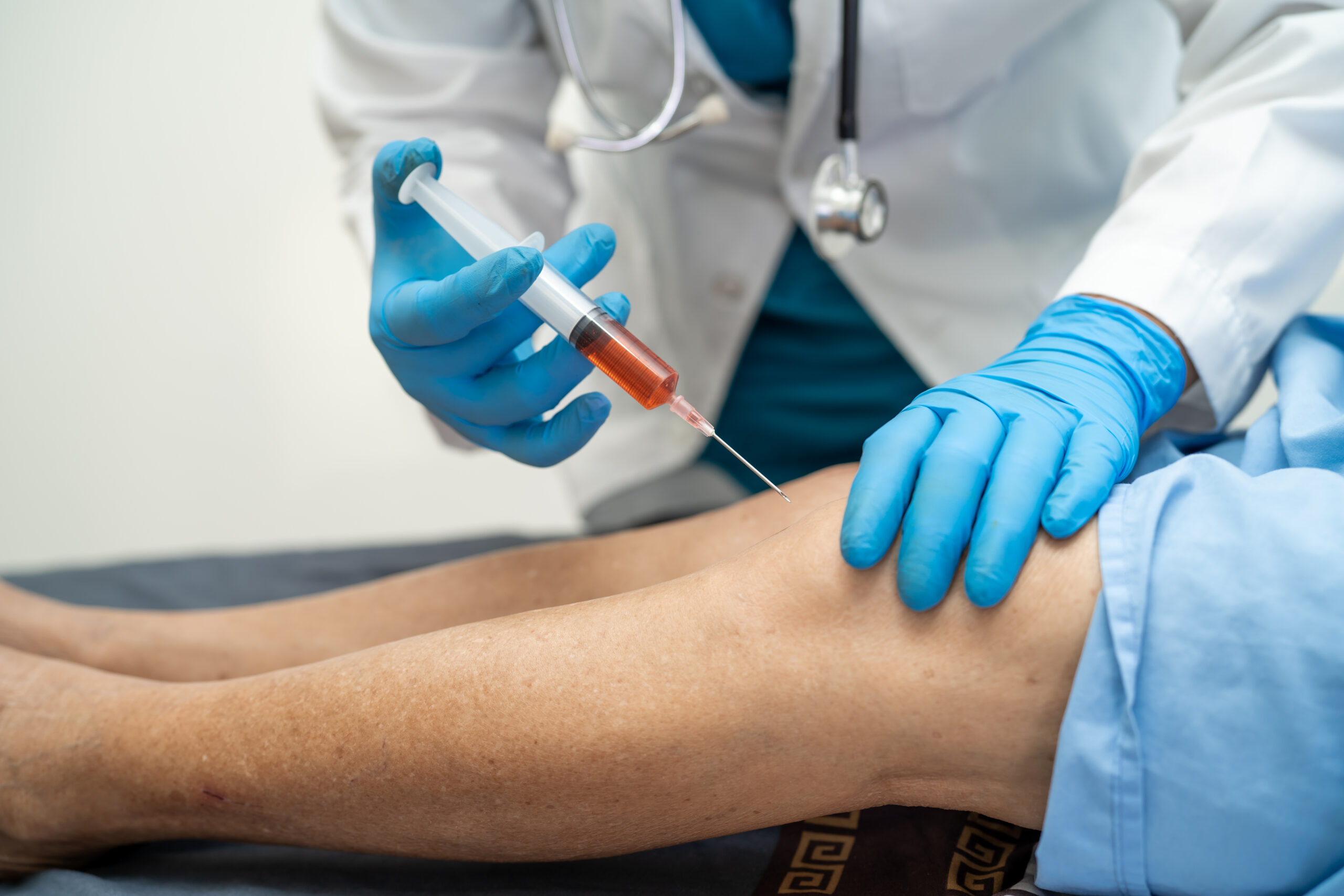Treatment Options for Osteoarthritis
A. Pain relief medication

Pain relief medication is an important component of the treatment of osteoarthritis. The goal of pain relief medication is to reduce pain and improve joint function, allowing patients to return to their daily activities.
There are several types of pain relief medication that may be used for osteoarthritis, including:
- Nonsteroidal Anti-Inflammatory Drugs (NSAIDs): such as ibuprofen, naproxen, and aspirin, work by reducing inflammation and pain in the affected joints.
- Acetaminophen: a mild pain reliever that is often used for mild to moderate pain.
- Topical Pain Relievers: such as creams, gels, and patches that contain pain-relieving medications, which are applied directly to the skin over the affected joint.
- Opioid Pain Relievers: such as codeine and hydrocodone, are powerful pain medications that are sometimes used for severe pain but are associated with significant risks, including addiction and overdose.
It is important to discuss the benefits and risks of pain relief medication with your doctor to determine the best approach for your individual case of osteoarthritis. In some cases, other treatments, such as physical therapy or joint injections, may be used in addition to or instead of pain relief medication.
B. Physical therapy

Physical therapy is a commonly used treatment for osteoarthritis and can help improve joint function and reduce pain. Physical therapy typically involves exercises and activities that are designed to help improve the range of motion, strength, and flexibility in the affected joints.
A physical therapist can work with you to develop a customized treatment plan that addresses your specific needs and goals. This may include:
- Range of Motion Exercises: exercises that help improve flexibility and reduce joint stiffness.
- Strength Training: exercises that help build strength in the muscles surrounding the affected joints, which can help improve joint stability and reduce pain.
- Endurance Training: exercises that help improve overall fitness and reduce the risk of disability.
- Manual Therapy: techniques, such as joint mobilization and massage, that are performed by a physical therapist to help improve joint function and reduce pain.
- Assistive Devices: such as braces, canes, and walkers, which can help improve joint stability and reduce the risk of falls.
Physical therapy can be an effective way to manage osteoarthritis and improve quality of life. It is important to work with a physical therapist who is experienced in treating osteoarthritis to ensure the best outcomes.
C. Weight management

Weight management is an important aspect of the treatment of osteoarthritis, as carrying excess weight places additional stress on joints, particularly in weight-bearing areas such as the knees and hips. Losing weight can help reduce the symptoms of osteoarthritis and improve joint function.
There are several strategies for managing weight in people with osteoarthritis, including:
- Healthy Eating: following a balanced diet that is low in calories and high in nutrients can help you maintain a healthy weight. This may involve reducing portion sizes, choosing healthier foods, and reducing your intake of processed foods and added sugars.
- Regular Exercise: engaging in regular physical activity can help you maintain a healthy weight and improve overall health. Exercise can also help reduce pain and improve joint function in people with osteoarthritis.
- Behavioural Changes: making changes to your daily habits, such as reducing sedentary time and increasing physical activity, can help you maintain a healthy weight and reduce the symptoms of osteoarthritis.
- Medications: in some cases, medications may be used to help manage weight, although these should be used with caution and under the supervision of a healthcare provider.
It is important to work with a healthcare provider to develop a weight management plan that is tailored to your individual needs and goals. A combination of dietary changes, physical activity, and behavioral change is often the most effective approach for managing weight in people with osteoarthritis.
D. Joint injections

Joint injections are a type of treatment that can be used to manage the symptoms of osteoarthritis. They involve injecting medication directly into the affected joint to help reduce pain and improve joint function.
There are several different types of joint injections that may be used to treat osteoarthritis, including:
- Platelet-rich plasma (PRP) injections: PRP injections contain a concentrate of the patient’s own platelets, which are cells that are involved in the healing process. These injections are thought to help promote healing and reduce pain in the affected joint.
- Corticosteroid injections: These injections contain a type of anti-inflammatory medication that can help reduce pain and swelling in the affected joint. Corticosteroid injections are typically used
to treat acute symptoms of osteoarthritis and may provide temporary relief.
- Hyaluronic acid injections: These injections contain a substance that is similar to the natural lubricating fluid found in joints. They are used to help improve joint function and reduce pain in people with osteoarthritis.
Joint injections are typically performed by a healthcare provider and may be done in a doctor’s office or in a hospital setting. They are typically well tolerated and have a low risk of complications.
It is important to discuss the potential benefits and risks of joint injections with your healthcare provider to determine if they are an appropriate treatment option for you.
E. Assistive devices

Joint injections are a type of treatment that can be used to manage the symptoms of osteoarthritis. They involve injecting medication directly into the affected joint to help reduce pain and improve joint function.
There are several different types of joint injections that may be used to treat osteoarthritis, including:
- Platelet-rich plasma (PRP) injections: PRP injections contain a concentrate of the patient’s own platelets, which are cells that are involved in the healing process. These injections are thought to help promote healing and reduce pain in the affected joint.
- Corticosteroid injections: These injections contain a type of anti-inflammatory medication that can help reduce pain and swelling in the affected joint. Corticosteroid injections are typically used
to treat acute symptoms of osteoarthritis and may provide temporary relief.
- Hyaluronic acid injections: These injections contain a substance that is similar to the natural lubricating fluid found in joints. They are used to help improve joint function and reduce pain in people with osteoarthritis.
Joint injections are typically performed by a healthcare provider and may be done in a doctor’s office or in a hospital setting. They are typically well tolerated and have a low risk of complications.
It is important to discuss the potential benefits and risks of joint injections with your healthcare provider to determine if they are an appropriate treatment option for you.
F. Surgery (in severe cases)

Surgery is sometimes used as a treatment option for osteoarthritis in severe cases when other treatments, such as pain relief medication and physical therapy, are not providing adequate relief. The goal of surgery is to improve joint function and reduce pain.
There are several types of surgical procedures that may be used to treat osteoarthritis, including:
- Joint replacement surgery: This involves removing the damaged joint and replacing it with a prosthetic joint. Joint replacement surgery is typically performed for people with osteoarthritis in the hip, knee, or shoulder.
- Arthroscopy: This is a minimally invasive procedure in which a small camera is inserted into the joint to allow the surgeon to visualize and repair damaged tissues. Arthroscopy may be used to treat osteoarthritis in the knee or shoulder.
- Osteotomy: This procedure involves cutting and reshaping bones to improve joint alignment and reduce stress on the affected joint. Osteotomy may be used to treat osteoarthritis in the knee.
It is important to discuss the potential benefits and risks of surgery with your healthcare provider to determine if it is an appropriate treatment option for you. In some cases, surgery may not be the best option, or it may not be possible due to other health conditions. Your healthcare provider can help you weigh the benefits and risks and determine the best course of treatment for your specific needs.
Relevant Resource : Hairline Fracture

